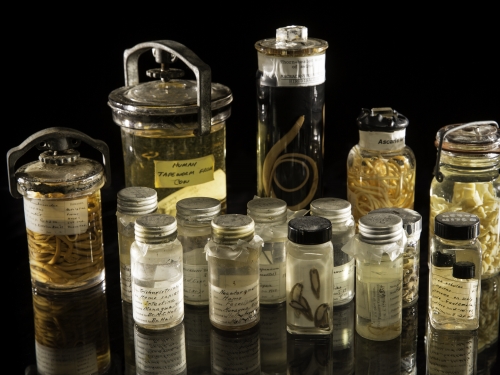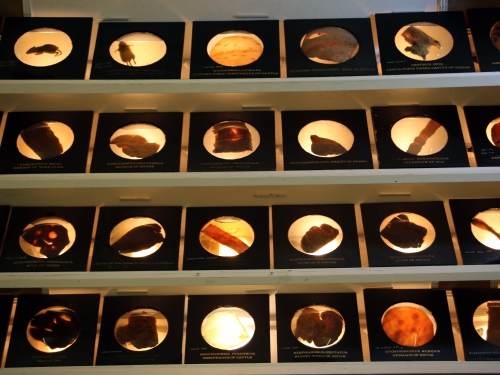A parasite specimen from the Smithsonian's National Parasite Collection at the National Museum of Natural History. The species, Macracanthorhynchus hirudinaceus, is an acanthocephalan parasite and is usually found in pigs. Parasites often have complex life cycles that involve several species of animals as intermediate hosts, and this particular parasite species spends part of its larval stage in beetles. Due to their complex ecological connections with many animals during their lifecycles, parasites play a delicate role in ecosystems and can be particularly vulnerable to sudden changes in their environments and hosts.
The National Parasite Collection holds more than 20 million parasite specimens in connection with information about their geographic distribution and host animals. A team of researchers drew on this collection to analyze the impact of climate change on parasite biodiversity in the 21st century. Their findings are published in the Sept. 6 issue of Science Advances.
Paul Fetters for the Smithsonian Institution




